

Scent and Synapse: Aromatic Flora and the Mechanisms and Power of Memory Recall
By Gayil Nalls
Sign up for our monthly newsletter!
A fter decades of sharing the experience of World Sensorium, I’m still impressed by what people recall by smelling these molecules. A single inhalation can unlock a cascade of memories—some long buried, others sharpened with time. People often describe sensations they haven’t thought about in years: the scent of jasmine conjuring a grandmother’s garden, or the dry, resinous scent of frankincense evoking sacred rituals from childhood. These reactions aren’t abstract; they are visceral, immediate, and emotionally charged.
Salman Rushdie once told me that the scent of sandalwood instantly transported him back to his childhood in Bombay, India—sitting in a bathtub, surrounded by steam, playing with carved wooden animals made of that same fragrant wood. The aroma wasn’t just a trigger; it was a portal, returning him to a moment of warmth, innocence, and sensory intimacy.

Keith Richards, in his own raw and poetic way, once explained to me why he chose to snort his father’s ashes. It wasn’t just an act of rebellion or shock. He said it was about memory—about trying to reclaim the physical closeness of the moments when his father would drape an arm over his shoulders, and he, as a child growing up with his family in Dartford, Kent, England would inhale the scent of his father’s armpits. For Richards, that was a deeply personal way to feel his father’s presence again.
What continues to move me is how universal this phenomenon is. No matter the culture, no matter the age, scent bridges the present and the past. It collapses time. I’ve seen individuals moved to tears as they revisit childhood kitchens or landscapes, and moved to tears again when the places they love were lost to development or climate change. The aromatic flora used in World Sensorium isn’t just symbolic—they are functional memory devices, encoded with meaning and capable of reanimating deeply personal histories.
There’s something profoundly human in this response, as if the body remembers what the mind forgets. The aromatic molecules seem to bypass cognitive resistance and go straight to the heart of experience. And when they do, they often reveal not only memory, but also identity—rooted in place, in culture, and in shared sensory heritage.

As we face accelerating biodiversity loss and climate change, these moments of olfactory recall take on even greater significance. The aromas of native plants, ancestral forests, and traditional perfumes and medicines, are not only worth preserving—they are vital to how we understand ourselves, our past, and our connection to the living world.
The connection between scent and memory is among the most potent in human cognition. Aromatic flora—plants that emit volatile organic compounds (VOCs) with distinctive scents—have long played a significant role in human rituals, medicine, and memory. From lavender and rosemary to jasmine and sage, these plants not only offer sensory pleasure but also influence neural pathways related to memory formation and retrieval.
Unlike other senses, olfaction has a direct pathway to the brain’s limbic system, particularly the amygdala and hippocampus, which are areas closely tied to emotion and memory. When volatile compounds from aromatic flora are inhaled, they travel through the olfactory bulb and quickly activate these brain regions (Herz, 2004). This unique neuroanatomy helps explain why a single whiff of a flower like lilac or rose can transport someone back to a childhood garden or a loved one with whom they shared the aroma.
My daughter now takes great pleasure in the scent of bergamot and sweet orange essential oils. This mix was the first smell she could perceive after she lost her sense of smell for a while due to COVID. This aroma still brings her so much relief and happiness.
Studies have demonstrated that specific aromatic plants can enhance memory performance. Rosemary (Rosmarinus officinalis), for example, has been linked to improved prospective memory—remembering to perform actions in the future. In a study conducted by Moss et al. (2012), participants exposed to rosemary aroma experienced significant boosts in memory test performance compared to a control group.
Similarly, lavender (Lavandula angustifolia) has been associated with calming effects that indirectly support memory recall by reducing anxiety and mental fatigue (Diego et al., 1998). While it is known more for its sedative properties, this mental relaxation can enhance one’s ability to access stored memories by lowering cognitive noise.
The use of aromatic flora in cultural practices—such as incense in religious rituals, or floral garlands in ceremonies—can create strong associative memories. These culturally embedded scents often serve as retrieval cues, helping individuals access long-term autobiographical memories. In Japan, the tradition of kōdō, the art of appreciating incense, has been employed not only for aesthetic pleasure but also as a meditative practice that reinforces memory through repeated olfactory exposure (Classen, Howes, & Synnott, 1994).
Autobiographical memory retrieval through scent is often faster and more emotionally intense than that triggered by visual or auditory stimuli (Chu & Downes, 2002). This phenomenon, often called the “Proustian effect,” after Marcel Proust’s description of how the smell of a madeleine triggered vivid memories, has been repeatedly validated in empirical research. Aromatic flora provides powerful triggers for this type of recall, particularly when the scent is tied to a meaningful personal context.
The power of scent in memory has also led to therapeutic applications, particularly for individuals with Alzheimer’s disease and other forms of dementia. Aromatherapy using essential oils from plants like lemon balm (Melissa officinalis) and sage (Salvia officinalis) has shown promise in improving mood and cognitive function in patients with neurodegenerative conditions (Ballard et al., 2002; Tildesley et al., 2003).
In one study, Alzheimer’s patients exposed to the aroma of rosemary and lemon in the morning and lavender and orange in the evening showed improvements in personal orientation and cognitive function without adverse side effects (Jimbo et al., 2009).
Plants and their essences have been used for millennia in medicinal, sacred, and social contexts—each use encoding generations of knowledge and values. These experiences form part of a personal olfactory archive, a hidden map of identity that is both personal and collective. The scent of plants is one of the most intimate and intricate forms of perception, with each person’s response shaped by biology, memory, and emotion. When an aroma meets the nose, bioelectrical activity dances across synapses like a spark, awakening memories and stitching together feeling, place, and meaning in sensorial threads of consciousness.
Gayil Nalls, PhD is an interdisciplinary artist and theorist, and the founder of the World Sensorium Conservancy.
Top photo: pixabay.com, photo by Vaivography
References
Ballard, C. G., O’Brien, J. T., Reichelt, K., & Perry, E. K. (2002). Aromatherapy as a safe and effective treatment for the management of agitation in severe dementia: the results of a double-blind, placebo-controlled trial with Melissa. The Journal of Clinical Psychiatry, 63(7), 553–558.
Chu, S., & Downes, J. J. (2002). Proust nose best: Odors are better cues of autobiographical memory. Memory & Cognition, 30(4), 511–518.
Classen, C., Howes, D., & Synnott, A. (1994). Aroma: The Cultural History of Smell. Routledge.
Diego, M. A., Jones, N. A., Field, T., Hernandez-Reif, M., Schanberg, S., Kuhn, C., & McAdam, V. (1998). Aromatherapy positively affects mood, EEG patterns of alertness and math computations. International Journal of Neuroscience, 96(3-4), 217–224.
Herz, R. S. (2004). A naturalistic analysis of autobiographical memories triggered by olfactory visual and auditory stimuli. Chemical Senses, 29(3), 217–224.
Jimbo, D., Kimura, Y., Taniguchi, M., Inoue, M., & Urakami, K. (2009). Effect of aromatherapy on patients with Alzheimer’s disease. Psychogeriatrics, 9(4), 173–179.
Moss, M., Cook, J., Wesnes, K., & Duckett, P. (2012). Aromas of rosemary and lavender essential oils differentially affect cognition and mood in healthy adults. International Journal of Neuroscience, 123(7), 637–645.
Tildesley, N. T. J., Kennedy, D. O., Perry, E. K., Ballard, C. G., Savelev, S., Wesnes, K. A., & Scholey, A. B. (2003). Salvia lavandulaefolia (Spanish sage) enhances memory in healthy young volunteers. Pharmacology Biochemistry and Behavior, 75(3), 669–674.
Plantings
Issue 47 – May 2025
Also in this issue:
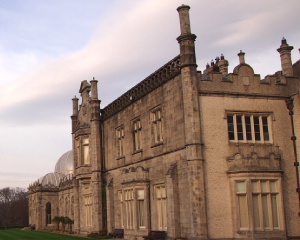
Haunted Histories in the Garden: A Sonic Journey Through Killruddery
By Joseph Young

Protecting Ireland’s Blanket Bogs
By Dr Margaret Flaherty and Dr Gary Goggins

Building with Hemp: A Circular Path to Ireland’s Climate Resilience and Beyond
By Walter Brennan
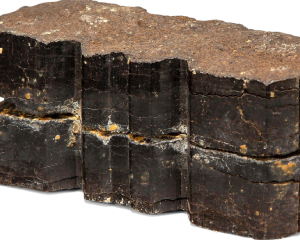
Joseph Beuys and the Bogs of Ireland
By Gayil Nalls
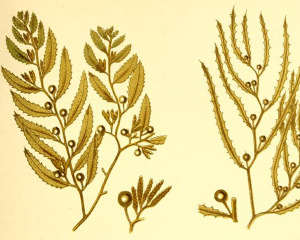
The Women Who Found Liberation in Seaweed
By Cara Giamo
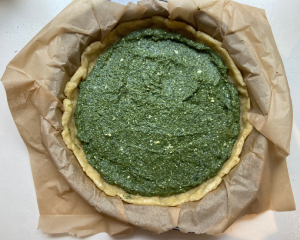
Eat More Plants Recipes:
Savory Spinach Pie
By Caterina Gandolfi
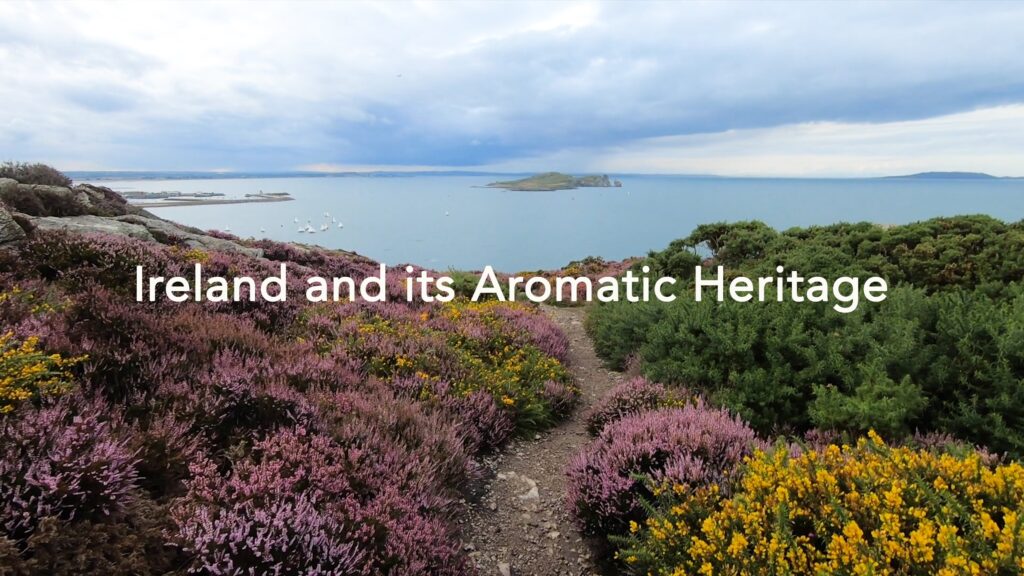
As Ireland transitions from the rich, smoky scent of peat-burning to a more sustainable future, its olfactory heritage is evolving. What will become the next iconic aromatic symbol of Ireland?
Click to watch the documentary trailer.

